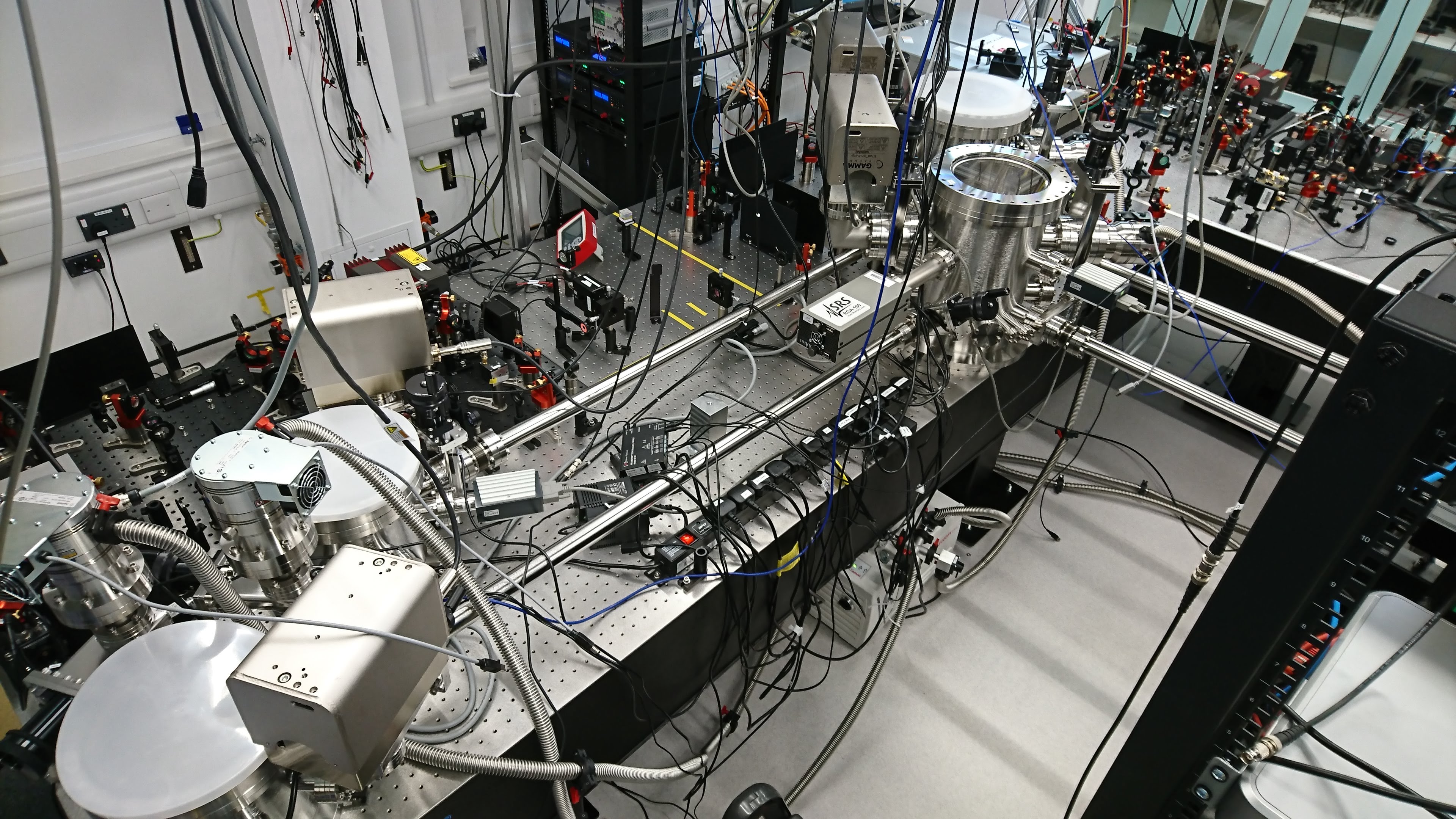Fundamental Physics Research¶
The QUEST experiment¶
Press release at Cardiff University's website
Link to the consortium website
Observing Quantum gravity phenomena¶
There is currently no physical theory that describes both quantum mechanics and gravity. It is predicted that if gravity is quantum mechanical, this property should produce certain observable signatures. Specifically, if space-time itself were quantised, it should exhibit quantum fluctuations, which can be observed through repeated measurements of a distance. If quantum gravity follows the holographic principle, these quantum fluctuations should have macroscopic correlations in a given volume of space-time. This experiment aims to observe such quantum fluctuations by taking correlated measurements of space-time using a pair of laser interferometers.
Optical setup of the experiment¶
The experiment consists of identical twin power-recycled Michelson interferometers, placed ~40 cm apart. If space-time, and by extension gravity, behave as described above, there should be a certain observable signal in the cross-spectrum of the two instruments. Therefore, the measurements done in this experiment will allow for either a detection of a signature of quantum gravity, or they will set an upper limit on the strength of correlated quantum fluctuations. Each interferometer is designed to have a displacement sensitivity of 10^{-19} m/rtHz in a frequency band from 1 to 250 MHz.
Multi-purpose instrument¶
QUEST is a multi-purpose instrument, also sensitive to dark matter and gravitational waves in the MHz band.
